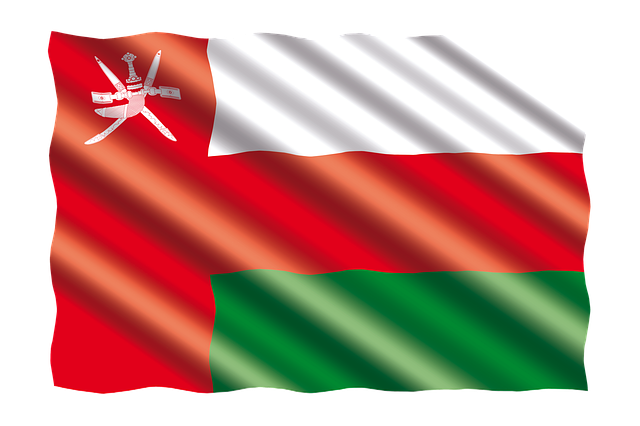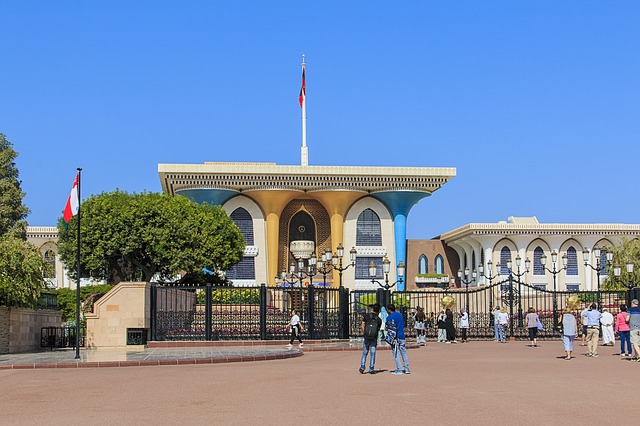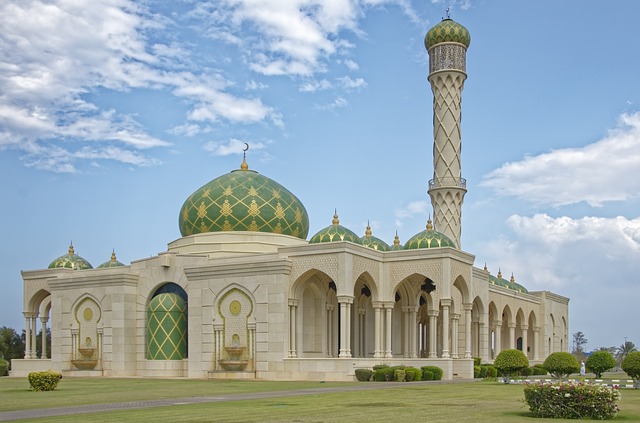 |
 |
The oldest independent state in the Arab world, is a 1700 km long coastal plain at the southeastern tip of the Arabian Peninsula lying bordering the Arabian Sea and the gulf of Oman. Barely inland from the coast ,formidable mountains stand guard
- massive upheaval in the ocean floor hundreds of millions of years ago formed these mountains ,producing modern Oman, one of the most colorful and geologically diverse countries on earth. The three bordering countries are Saudi Arabia, United Arab Emirates and Yemen. The official name of the country is Sultanate of Oman. A country that has , white sandy beaches, rocky mountain range, sandy desert area,wadis,palm-fringed oasis, and natural landscape. Trees and green grass lawns are a common feature, amazing for a country known as an oil rich desert. Arabic is the official language, English is widely spoken by the modern generation. Islam introduced in the 7th century is the state religion .It is now an ideal safe tourist destination, which has all the modern five star comforts for a stay, with unique historical sites and uncommon adventures to become a holiday to cherish with fond
During the olden days, Oman’s strategic location was used by Persians, Assyrians and Babylonians for trade with other parts of the world. Oman was never fully controlled by foreign powers, however partial occupation took place, and the main reason was its strategic position.Portugese dominated the region around Oman between 1507 and 1650, the Ottoman Empire between 1581 and 1888. In the mid 17th century the ruling Imam drove Portuguese out of the region.
Religion -Oman was one of the first countries to embrace Islam. Around the year 630CE, the Holy Prophet (P.B.U.H) sent a missionary, and the rulers of Oman embraced the new faith. Oman took up Ibadi Islam which was prior to the Sunni.Shia, split. Omani traders and sailors were important factors in spreading Islam around the Indian Ocean, Southeast Asia, and part of East Africa
Mosque –A place where Muslims worship. The word mosque comes from the Arabic word masjid.There are many mosques in Oman to facilitates worshipers throughout the nation.
The Sultan Qaboos Grand Mosque. This fine piece of architectural genius stands out from the rest in Oman. This is one of the only mosques that allow non-Muslim visitors. Beauty of this mosque is breathtaking and the ceilings are mesmerizing..Completion of the mosque was in the year 2001 after six years of hard work by a well qualified team of experts. It covers an area of 416000 square meters, and capable of holding 20000 worshipers. Building is made out of 300000 tons of sandstone. The mosque has the world’s largest single piece of carpet and chandelier. The chandelier is located in the center of the men’s prayer room hall and measures fourteen meters and weighs 8.5 tons. It holds 600000 shinning bright Swarovski crystals, 24 carat gold plating and took over 4 years to complete. One can imagine the tremendous efforts taken to create this master piece. There are over 20000 books in the library. It is beyond words to describe the beauty of this Majestic masterpiece, a creation beyond time.
Civilization -Archeological finds include flint tools, hearths and handmade pottery. Oman is considered as one of the oldest human inhabited places on earth, humans have lived for at least 106000years, and the city of Dereaze is about 9000 years old.
Oman had been inhabitant by many groups of people, and some came and left.Sumarians came over 4000 years ago and named the land as “Land of
Copper”. They were the first to export copper. Chaldea who came named the land as Iblita, Persians who came, were living for seven centuries. The Ad tribe who came based themselves in the desert. The Nabhani dynasty came to power and ruled Oman from 1154 to 1624, the Yoruba dynasty from 1624 to 1749, the Al Said dynasty from 1749 to date.

Modern Oman -His Majesty Sultan Qaboos bin Said Al Said ascended to the throne on the 23rd of July 1970, the modern Oman began from this date. Since this time the country has emerged as a prosperous and modern nation. Quality of life of the people, health and educational facilities has improved immensely.
Overall infrastructure of the nation has been improved to become one of the best states to be recognized worldwide.Cleaniness of the country is not second to any country in the world. Providing uninterrupted power supply and pipe borne supply of water to the residents was the first task. There are over 100 hotels;
some are built at very scenic places .Albustan Palace hotel and, Shangri-la Al Husn Resort and Spa are among the top ten.

Administratively Oman is divided into 11 Governorates, and they are sub-divided into 61 provinces. Population in Oman is around 4.6 million (2017 census).
Climate- It is a known fact that desert countries have a warm climate. Summer temperatures can exceed over 50degree centigrade. Average temperature in the capital Muscat varies between 40 Celsius in June to 25 Celsius in January. Coast is about 20 celsius.Southern region of Dhofar has the mildest temperature. Average rainfall is 80-100mm.Northen Hajar mountains receive an average rainfall of 400mm.The best time to visit Oman is during the winter between November and March.
Oil producing Nation-Commercial oil was found in Yibal by Shell and Partex in the year 1962, thus an oil producing Nation was born. Soon several other oil wells were found, and the first export of oil took place in July 1967.Petroleum Development Oman (P.D.O) is the major oil exploration and product company in Oman.
Exports -Apart from oil, other major exports include organic chemicals, oil seeds wood pulp, fertilizers, fish, ships, boats, milling products, aluminum, and rawhides.
Industries in Oman –Oman has formed six industrial estates and free zones to promote industries to boom the economy of the nation and to provide employment to the locals
Industrial Estates –Rusayl, Salalah, Sohar, Sur, Nizwa, Burami.
Free Trade Zones – Al Mazunah, Salalah, Port of Sohar (special economic zone)
Animal husbandry-Cattle, goats, sheep, donkeys, camels are widely raised and poultry farming is gaining momentum to be self sufficient with eggs and chicken. Oman is one of the countries taking care of Arabian horses and devotes attention to its breeding.
Horses – The Arabian or the Arab horse is a breed that originated in the Arabian Peninsula Archaeological evidence suggests that it is one of the oldest breeds.
They are light and have speed and endurance hence a specific advantage during the days of warring .Omani saddle is known as Za,ana and is different to the saddles used worldwide. Distinguish feature is the absence of leg stirrups. Omani riders are considered among the best in the world. Horses in Oman are well trained and well disciplined, the training include walking, Khabeeb(faster than the walk slower than the sprint) and run. Royal Oman police and His Majesty’s Royal stables have the best breed of horses that are well trained. Race course in Oman is designed according to international standards. Horse racing is an annual even witnessed by many including dignitaries.
Camels –The camel nicknamed “ship of the desert” has a deep rooted relationship with the Omanis .Camel racing is a very popular sport in Oman. The Government gives special care to the camels through proper veterinary facilities.. Camels have the ability to withstand thirst and are capable of travel long distance, the ideal mode of transport during ancient times. Both young and old Omani’s appreciate the services of the camel, and takes good care of them.
Arabian Oryx Sanctuary-In late seventies H.M ordered the initiation of a project to save the Oryx from extinction and to settle them in their natural habitat in the desert and plains of governorate of Al Wusta of the Sultanate. Today there are over 600 Arabian Oryx in the sanctuary and visitors enjoy the site of the movement of these herds.
Agriculture in Oman has been ongoing for centuries, and the country has five agricultural regions, commencing from north to south. They include the Musandam peninsula, Al Batina coast, valleys and the high plateau of the Eastern Region, the interior oases and Dhofar region, along the narrow coastal strip from the border with Yeman to Ras Naws and the mountains to the north. Rainfall, falaj system and modern technology support are depending factors for agriculture.
Dhofar region grows Bananas, mangoes, coconut, lime, nuts and melon, wheat and rice. Winter crops are tomatoes, chilies, cabbage, okra, eggplant,
cucumber. Seeb and Barka are major farming areas that depend on drip irrigation system Organic and aquaponic farms are very popular basing on hydroponic technology fruits and vegetables are grown in the farms in Barka including grapes, carrot cabbage, corn and other verities.
An expert study carried out indicates that Dhofar region can be the hub to produce all the vegetables and fruits to the country. Thus Oman is on the way to ensure fruits and vegetables are grown locally to cater to the entire population.
Frankincense.-This is an aromic gum obtained from a tree and burnt as incense and used in perfume.. Dhofar region has over 8000 trees. Oman has revived an ancient perfume industry that flourished 3000 years ago and opened a new market for Amouge meaning waves in Arabic to Europe and USA.”
The Date palm – It resembles the Sultanate’s rich heritage. Old Omani’s cherished three things, date palm or the tree of life as some call it, to provide food, the camel for transport and the falaj for water to cultivate and quench the thirst.
These were basic survival mandatory requirements. The date palm trunk and the branches provided many things that were an integral part of the Omani home and household. Date farming is a major industry and processed dates are a major export. Date honey is a byproduct .There is about 250 varieties of dates, and there are over eight million date trees in Oman.
Fishing; Oman has about 1700kilometers of coastline, and its history as a seafaring nation dates back a few centuries .Fish is a staple diet of the Omanis. Small fishing boats can be seen on the beaches from Sohar to Salalah.Fishermen venture into sea early hours of the morning, and return with nets full with loads of fish. Fishing is part of the livelihood of many, who inherited it from their fore fathers.
Voyages -Oman was known as the land of explorers as the expertise of these dhow sailing Omanis’ were highly sought after by explorers from distant lands and, during the period when there were no large cargo liners or commercial jets to make the world accessible by the sky. Omani sailors were brave in facing rough
seas and other terrors during journeys in the ocean. They had an excellent knowledge of seasonal weather patterns, astronomy and art of navigation. It is believed that Omanis pioneered the use of the mast and sail.Al-Masudi the Great, the tenth century Arab traveler who made the 8000 miles long voyage in the ocean between Abyssinia, India and China, and that most of the marines were Omanis.
Trading routes-To trade Frankincense from Dhofar, Omanis followed the trading routes through sea to Egypt, India, Rome and China.
Ship Building-Omanis are one of the greatest ship builders in the world. In Oman the traditional fishing boats are still produced from memory, without plans and drawings, and the entire process takes three to six months. Building of a dhow takes also takes about 3 to six months depending on the size of the ship. The town Sur is famous for ship building; the required wood (teak) is brought from India. The ships sambuk and ghanjah were built in Sur which went as far as India, Zansibar, Iraq, and China. These vessels were also used for pearl fishing.Sur has retained its reputation as a ship building town.Hamood al Ghilani is considered as one of the main world leading ship builders in Oman
Pottery- The art of pottery making has been existing in Oman for over 4000 years. Presently pottery items are mainly used as decorative pieces in homes, shopping malls and gardens. These items are popular souvenirs. The art of vessel making is an industry in Oman.Bahla is famous for pottery making, the reasons behind are that the soil of the nearby wadi is rich in red clay used for making clay utensils and the artists have magical fingers which allow them to master the ancient art and create very fine and strong items.
Omani mandoo-The wood in Oman is valued for its high quality and it is flexible to be shaped and engraved into different tools and objects. Decorative doors and windows are made out of the wood but the most famous item is the mandoo, a wooden chest made in various sizes and decorated. It can be used to stow clothes, jewelry or other items.
The Khanjar and Omani Silver-This Omani dagger known as the khanjar represents the unique Omani culture. It is also featured in the National flag. Men wear it in a belt around their waist for important occasions and national festivals, weddings and other social events. It is made out of Omani silver, and the handle is
made out of ivory. Omani silver is of very high quality and famous among the Arab world.
In the past Omani women’s jewelry was made out of Omani silver, and wide verities are still produced. Some items are necklaces, rings, earrings, bracelets, anklets and other items which are very precious gifts.
Souq– A souk is an open market place, and there are several of them in Oman.
Muttarh souq– This ancient souq near the Cornish beach and the old town is visited by many people, as it retains the traditional Arab market atmosphere. Although housed under modern timber roofing with old buildings on either side of the gully which serves as the market. Shops sell Omani artifacts, fruits vegetables, traditional silver ornamental items, groceries, dates, bee honey and many other items, including jewelry and hardware. Few coffee shops cater to the coffee drinkers and small restaurants serve short eats and soft drinks.
UNESCO world heritage sites in Oman –following five are listed by UNESCO as world heritage sites.-Falaj irrigation system, Ancient city of Qalhat, Archaeological sites of Bat, Al-khutm, and Al–ort, Bahia Fort, Land of Frankincense.
Falaj irrigation system-These are ancient water channels dating from 500AD located in the regions of Dakhiliyah,Sharqiyah and Batina.Falaj does systematically divide the water among all the inhabitants and to the lands for agriculture.
Watchtowers are placed to protect the system, as water is so precious in a desert. The system depends on water underground and is extracted by a simple method without using any machines. It is amazing to see how water is transported through the canals for long distances in mountain areas. A technically correct system is in place to control and divide the water as required.
Ancient city of Qalhat- This ancient city dates back to pre-Islamic times. Once it was a key hub for trading. In the 13th century, Governor Ayaz was ruling both Hormuz and Qalhat.During his absence Qalhat was ruled by his wife Maryam, and she continued ruling the city after her husband’s death. She built the Great Friday mosque and a mausoleum. Marco polo visited the city in the 13th century and Iban Battuta in the 14th century. Iban Battuta wrote that the city has good markets and






